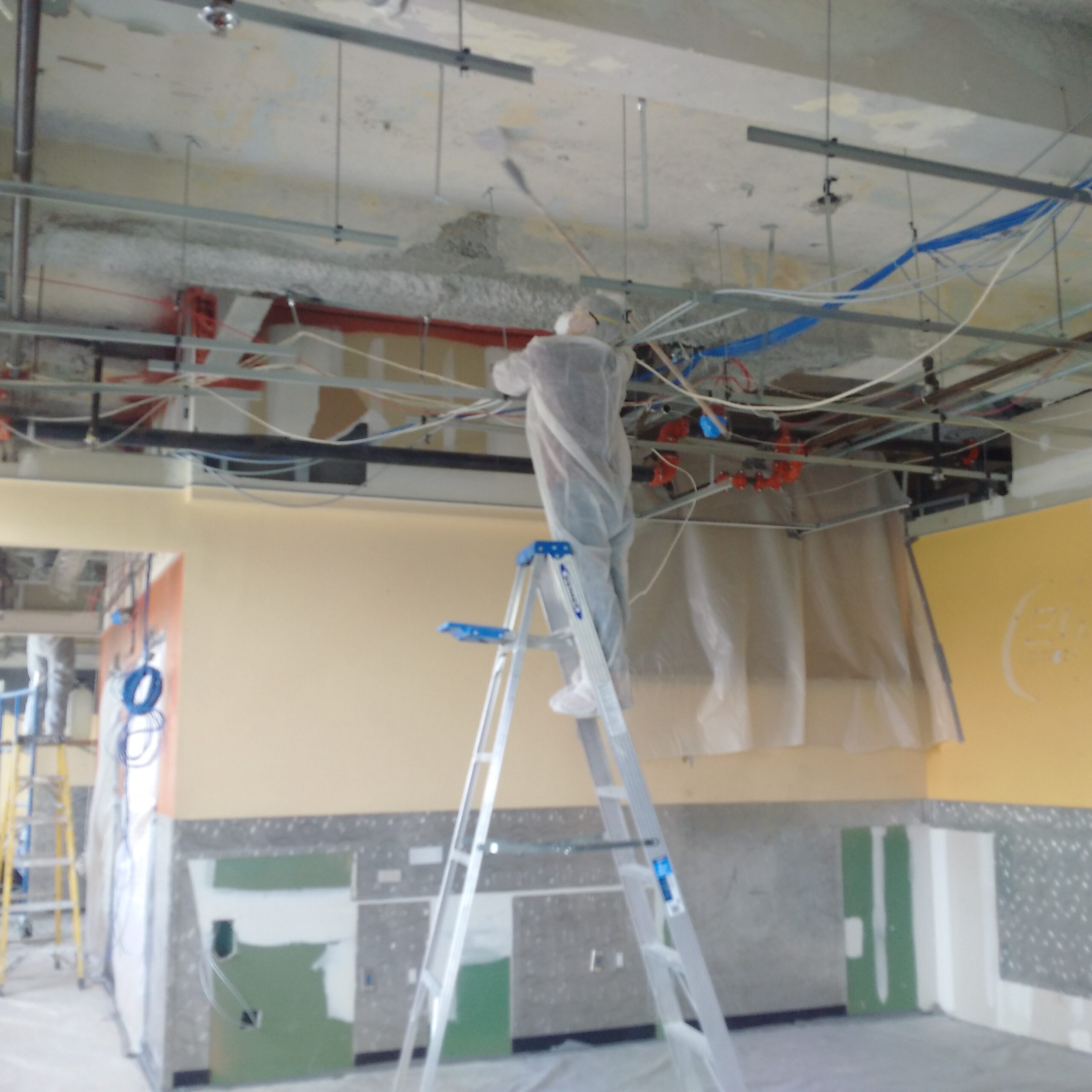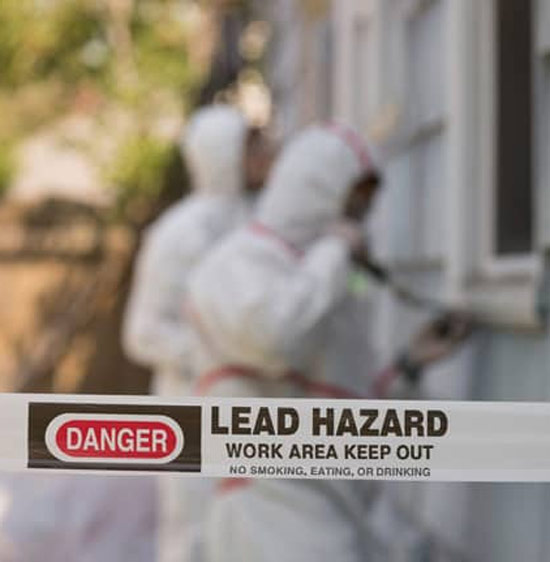Reliable DOH & HPD Lead Violation Removal in NYC-- Protect Your Property
Reliable DOH & HPD Lead Violation Removal in NYC-- Protect Your Property
Blog Article
Crucial Devices and Strategies for Effective Lead Infraction Cleaning
Resolving lead violations properly necessitates a comprehensive approach that blends the right devices with strategic methods. The first step includes furnishing workers with Individual Protective Devices (PPE) to secure their health and wellness. Simultaneously, making use of specialized cleaning devices, such as HEPA vacuum cleaners and lead-specific cleaner, is imperative for thorough pollutant removal. Effective containment methods, including plastic bed linen and adverse atmospheric pressure systems, are necessary to protect against the spread of harmful materials. Additionally, safe disposal techniques and rigorous adherence to governing guidelines guarantee responsible handling of hazardous waste. But what are the nuanced strategies that absolutely make a difference?
Individual Safety Devices
Personal protective equipment (PPE) is a vital component in the effective monitoring of lead contamination cleanup. The vital PPE for lead cleanup includes respirators, safety apparel, handwear covers, and eye protection.
Respirators, especially those geared up with HEPA filters, are essential for filtering airborne lead fragments, stopping breathing. Safety apparel, consisting of coveralls and disposable matches, protects against lead dirt from sticking to employees' garments, lowering the danger of additional contamination.
Additionally, strenuous training on the proper use and upkeep of PPE is necessary. Workers have to be informed on wearing and doffing treatments to prevent contamination. Normal inspections and substitutes of PPE elements are required to maintain their protective capacities, ensuring a safe and certified clean-up operation.
Specialized Cleanup Tools

Another essential device is the wet/dry vacuum cleaner, which can successfully tidy up both dust and fluid pollutants. These vacuums commonly come with HEPA filters to offer an extra layer of safety. Wet wipes or tack cloths are also essential for surface cleaning; they are specifically created to capture and hold lead particles, decreasing the danger of spreading out contamination.
For more persistent deposits, specialized lead-removal cleaner are required. These representatives are created to break down lead particles, making them easier to get rid of. Scrub brushes with tough bristles can aid in this procedure, especially on rough surfaces where lead dirt has a tendency to adhere extra strongly.
Additionally, encapsulants are used to secure lead-contaminated surface areas, stopping the launch of lead dirt. These specialized paints and finishes are made to stick to various substratums, offering a long-lasting option for lead control.
Reliable Containment Techniques
Efficient control techniques are critical in mitigating the spread of lead contamination throughout cleaning activities. Carrying out durable control techniques guarantees that lead fragments do not migrate to unaffected locations, therefore protecting both employees and the atmosphere (DOH & HPD Lead Violation Removal NYC).

To boost control, encapsulants can be related to surfaces that are not being eliminated or disrupted. These specialized coverings bind lead dirt, reducing its availability for resuspension. In addition, read all personnel need to wear suitable Personal Safety Tools (PPE), including respirators and non reusable suits, to prevent contamination spread.
Safe Disposal Practices
Ensuring risk-free disposal practices is a critical component in the management of lead contamination cleaning. Proper disposal mitigates the risk of lead Go Here returning to the setting and threatening public health and wellness (DOH & HPD Lead Violation Removal NYC).
Delivering lead waste requires adherence to stringent standards. Using certified contaminated materials carriers makes certain that the products are dealt with properly. Documents, including materializes describing the type and quantity of waste, must accompany shipments to track the waste from the site of origin to its last disposal location.
Designated contaminated materials disposal facilities are outfitted to take care of lead-contaminated products safely. These facilities typically utilize innovative methods such as stablizing, solidification, or chemical treatment to reduce the effects of the lead before disposal. Landfilling in specialized, lined locations that avoid leachate from polluting groundwater is an usual practice for final disposal.
Normal training for workers involved in lead waste disposal is crucial to maintain security standards and protect against unexpected direct exposure. By sticking to these methods, companies can significantly reduce the environmental and wellness impacts connected with lead contamination.
Regulatory Compliance Tips

Sticking to regulative conformity is vital in the successful implementation of lead contamination clean-up. Comprehending and following government, state, and local laws makes sure not only the security and health of individuals but additionally the legal and monetary well-being of the clean-up company. The Environmental Security Agency (EPA) establishes rigid criteria, such as the Lead Restoration, Repair, and Paint (RRP) Policy, which mandates appropriate accreditation and training for contractors managing lead-based tasks.
Compliance begins with an extensive evaluation of suitable regulations and policies. Organizations needs to stay updated on any legislative modifications, which can be assisted in via routine training sessions and subscribing to sector updates. Paperwork is one more critical compliance element; maintaining thorough records of all activities, including inspection records, worker training logs, and disposal shows up, is important.
Additionally, engaging with licensed lead examiners or run the risk of assessors ensures that lead dangers are properly identified and minimized. Companies should impose making use of Personal Protective Equipment (PPE) and guarantee that safety and security methods are purely complied with. Clear interaction with stakeholders, including employees, customers, and regulative bodies, will promote a culture of conformity Recommended Reading and responsibility, inevitably adding to a more secure and extra reliable lead cleaning process.
Final Thought
Reliable lead violation cleanup necessitates the assimilation of specialized tools and strategic approaches to guarantee safety and security and efficacy. Using HEPA vacuums, specialized cleansing representatives, and efficient control techniques such as plastic bed linen and negative atmospheric pressure systems is imperative. Individual protective devices (PPE) safeguards employees from direct exposure, while safe disposal techniques and strict adherence to regulative conformity are necessary for responsibly managing contaminated materials. Jointly, these steps considerably alleviate health threats and add to a cleaner atmosphere.
Report this page